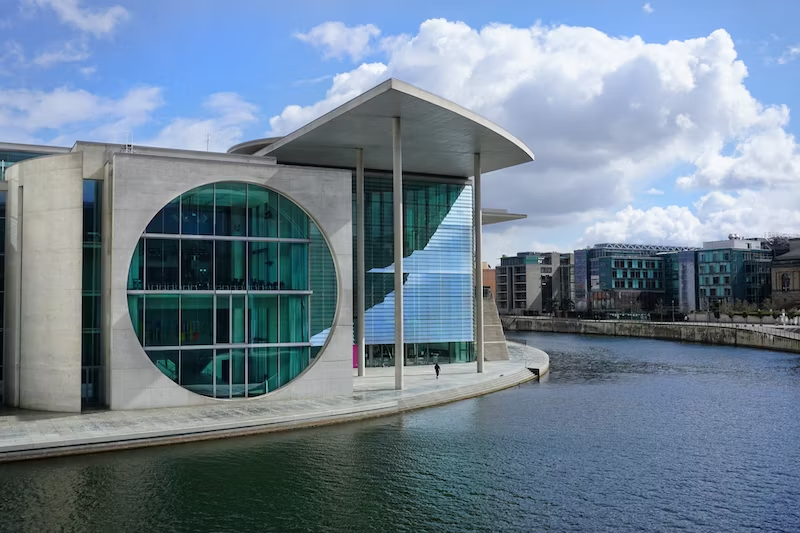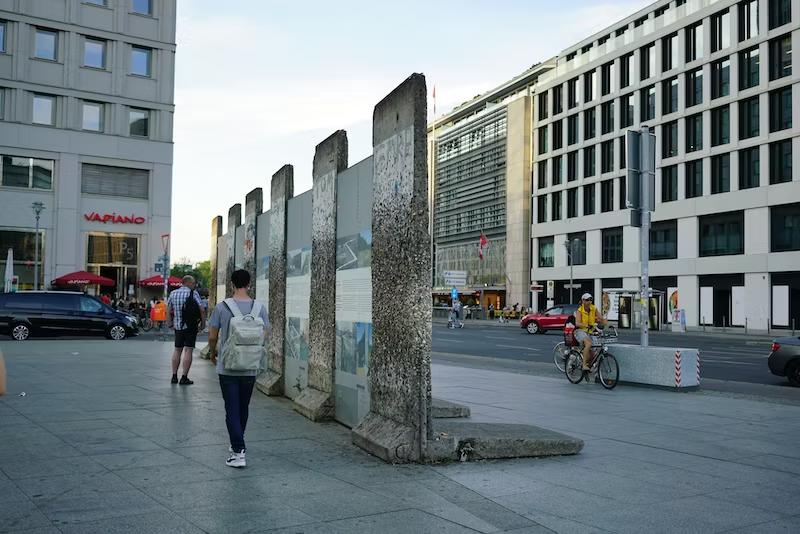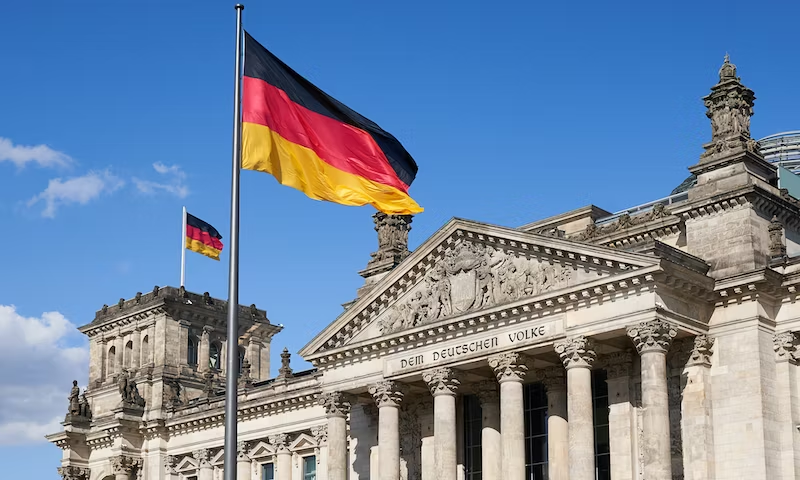Unraveling Berlin's History & Modern Identity in 10 Steps

Berlin, the capital of Germany, presents a rich tapestry where history and modernity intertwine. Pivotal events and eras have marked the city's journey through time, each contributing to its distinctive historical and modern identity. From the days of Adolf Hitler and the tumultuous times of World War II to the Cold War era, the establishment of the German Democratic Republic, and the fall of the Berlin Wall, Berlin has been at the forefront of significant historical developments.
Additionally, its past is deeply rooted in events like the Thirty Years' War and its iconic landmarks like the Brandenburg Gate. These elements together have shaped Berlin's unique character. Let's delve into 10 key steps that unfold the modern historical identity of Berlin, showcasing how its rich past has influenced its vibrant present.
While exploring Berlin’s rich history and modern landmarks, consider using Berlin bus station luggage storage for hassle-free travel. Nannybag provides a convenient and secure way to store your bags, allowing you to delve into Berlin’s past and present without heavy luggage.
Step 1: The Birth of Modern Berlin in the 19th Century
The 19th century marked a transformative era for Berlin as it began to establish itself as a major European center. This period was characterized by rapid industrialization, which brought about significant economic growth and urban expansion. Alongside its industrial development, Berlin experienced a cultural renaissance, with arts, science, and philosophy advancements.
The city became a melting pot of ideas and creativity, laying the foundation for the vibrant and diverse capital that Berlin is today. This era set the stage for Berlin's emergence as a modern city, shaping its identity as a hub of innovation and cultural richness.
Step 2: Adolf Hitler and World War II
The rise of Adolf Hitler and the Nazi regime brought a dark period to Berlin. The city became the epicenter of Nazi power, and the impact of World War II was devastating. The Battle of Berlin, in particular, resulted in widespread destruction and loss of life, leaving deep scars on the city's landscape and psyche.
This period drastically altered Berlin's course, leading to significant political, social, and architectural changes. The aftermath of the war left Berlin in ruins, setting the stage for its division and the ensuing Cold War era.
Step 3: Division into East and West Berlin
After World War II, Berlin found itself at the heart of the geopolitical struggle between the Soviet Union and the Western Allies. The city was split into East and West Berlin, a division that starkly represented the Iron Curtain. East Berlin, under Soviet control, and West Berlin, influenced by the US, UK, and France, developed along different lines, creating a dichotomy in lifestyle, governance, and ideology. This division deeply influenced Berlin's character, with each side of the city developing its own distinct identity.
Step 4: The Construction of the Berlin Wall
The construction of the Berlin Wall in 1961 was a defining moment in Berlin's history. Erected by the German Democratic Republic (East Germany), it physically and symbolically divided East and West Berlin. The Wall became a global symbol of the Cold War, representing the ideological divide between communism and democracy. The Wall's presence impacted daily life, separated families, and became a site of political tension and human tragedy.

Step 5: Life in East Germany and West Germany
Life on either side of the Berlin Wall was profoundly different. East Berlin, under communist rule, was marked by a more austere lifestyle, limited freedoms, and a focus on socialist ideals. In contrast, West Berlin, supported by the West, became a hub of capitalism, cultural expression, and relative prosperity. These contrasting experiences shaped the attitudes, culture, and outlook of the residents on each side, contributing to the complex identity of Berlin as a city of contrasts and diversity.
Step 6: The Cold War Tensions
The Cold War era placed Berlin at the forefront of global political tensions, with the city symbolizing the ideological rift between the East and the West. The notorious Checkpoint Charlie stood as one of the most significant crossing points between East and West Berlin and became an emblematic site of Cold War espionage, political standoffs, and the stark reality of a divided world.
It was more than just a border crossing; it was a poignant symbol of a city and world divided by contrasting ideologies. It served as a daily reminder of the fragile state of international relations during this tense period.
Step 7: The Fall of the Berlin Wall
The fall of the Berlin Wall on November 9, 1989, was a watershed moment in Berlin's history, signaling the end of Cold War divisions. The demolition of the Wall was not just a physical dismantling but also a symbolic reunification of a city long divided. It marked the Iron Curtain's collapse and was celebrated worldwide as a victory for freedom and democracy. The event set in motion the process of reunifying East and West Germany and opened a new chapter in Berlin's history, one that promised hope and renewal.
Step 8: Reunification and the Federal Republic of Germany
The reunification of East and West Berlin and the subsequent establishment of Berlin as the capital of the Federal Republic of Germany in 1990 marked a significant milestone in the city's history. This event was about healing historical wounds and rebuilding a city that had been physically and ideologically divided for decades. The reunification brought new challenges and opportunities, as Berlin had to integrate two distinct societies and infrastructures, but it also set the stage for the city to become a symbol of unity and progress.

Step 9: Berlin as the Capital of Germany
Berlin embarked on a transformative journey as the capital of a reunified Germany. The city became a melting pot of cultures, ideas, and influences, reflecting its divided past and aspirations for the future. Berlin's role as the capital brought significant investment, redevelopment, and a renewed focus on the arts, culture, and politics. The city's skyline rapidly evolved, blending historical landmarks with modern architecture, symbolizing a city moving forward while respecting its past.
Step 10: The Spree River – A Symbol of Continuity
The Spree River, meandering through Berlin, has been a constant presence in the city's ever-changing landscape. Historically, it has been a lifeline for trade and transport and a natural boundary within the city. Today, the Spree River is more than just a body of water; it's a symbol of Berlin's continuity and resilience. Its banks are home to vibrant cultural scenes, historical sites, and modern developments, representing Berlin's dynamic and enduring spirit.

Say hello to exploring and goodbye to heavy bags!
What if you could enjoy every minute in the city without the burden of your bags?
- Safe luggage storage for a flat daily price of 4,50 €/luggage item
- Included luggage protection of up to €10000 in case of breakage, loss or theft
